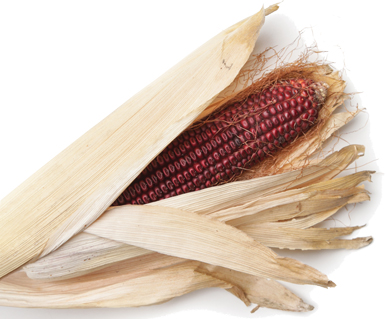
In her new children’s book, Greendeer chronicles the keepunumuk, or harvest, feast shared in 1621 by the Wampanoag people—who for 12,000 years tended the land that is now Plymouth, Massachusetts—and the “newcomers” who arrived by ship from England. While this Thanksgiving story includes turkey (and succotash, duck, rabbit, deer, fish, pumpkins, and cranberries), it’s not told from the perspective of “pilgrims and Indians.” Central to the Wampanoag story are “the three sisters”—weeâchumun, or corn, beans, and squash.
Q. Why tell the story through corn?
A. The opportunity to write the book came from two friends who are Native and wanted a more authentic way to explain Thanksgiving to their kids. The early manuscripts basically regurgitated the White colonial account of the first harvest, so we decided to give voice to the plants and the animals: What might they have thought when the boat arrived? What would they have seen when the Natives were helping the newcomers plant corn?
Corn is nondiscriminatory; her only objective is to feed people. If it wasn’t for corn and her sisters, the newcomers’ first harvest would not have been possible, and they would have struggled to survive. Corn was not grown in England, so they didn’t know what to do. The corn seeds were the first thing that they found when they raided the Native homes.
Q. What does the traditional American narrative about Thanksgiving get wrong?
A. The only passage that exists about the first harvest feast is in a collection of stories called Mourt’s Relation. It [simply] says: “We met with the Natives. We feasted for three days. The Natives went fowling and brought four deer. Ousamequin, the leader at the time, showed up with 90 of his warriors, and we exercised our arms.” The tone was grateful, friendly—not hostile.
I think a lot of [Indigenous] folks are jaded about what has happened to tribes [as a result of] colonization. They want to say that Thanksgiving never happened or that it wasn’t friendly. At that first harvest, however, everybody on both sides— Natives who had endured the plague and this small group of newcomers that had survived a harsh New England winter—was just very grateful to come together over food.
Q. How can people begin to incorporate Native traditions into their Thanksgiving?
A. We need to create more authentic conversations about Thanksgiving with Native voices and experiences at the forefront. We need to introduce themes of colonization—like the National Day of Mourning—in a way that’s not just saying, ‘this is all the pilgrims’ fault.’
[A good way] to honor Native people is to make space on your table for an Indigenous dish. The book includes a recipe for nasamp, [a traditional Wampanoag dish made from cornmeal, nuts, berries, and maple syrup]. It’s always best to start a conversation over food.
Q. Last year you helped reintroduce and harvest the Wampanoags’ King Philip corn. What was that like?
A. After I appeared in Gather, a [2020] documentary about food sovereignty, Truelove Seeds from Philadelphia reached out and said they had some Wampanoag corn, and would I like to grow it? I jumped at the opportunity and started planting on one of the community plots on the tribe’s 12-acre farm. Last year was just trial and error but the harvest came out well: 200 to 300 ears.